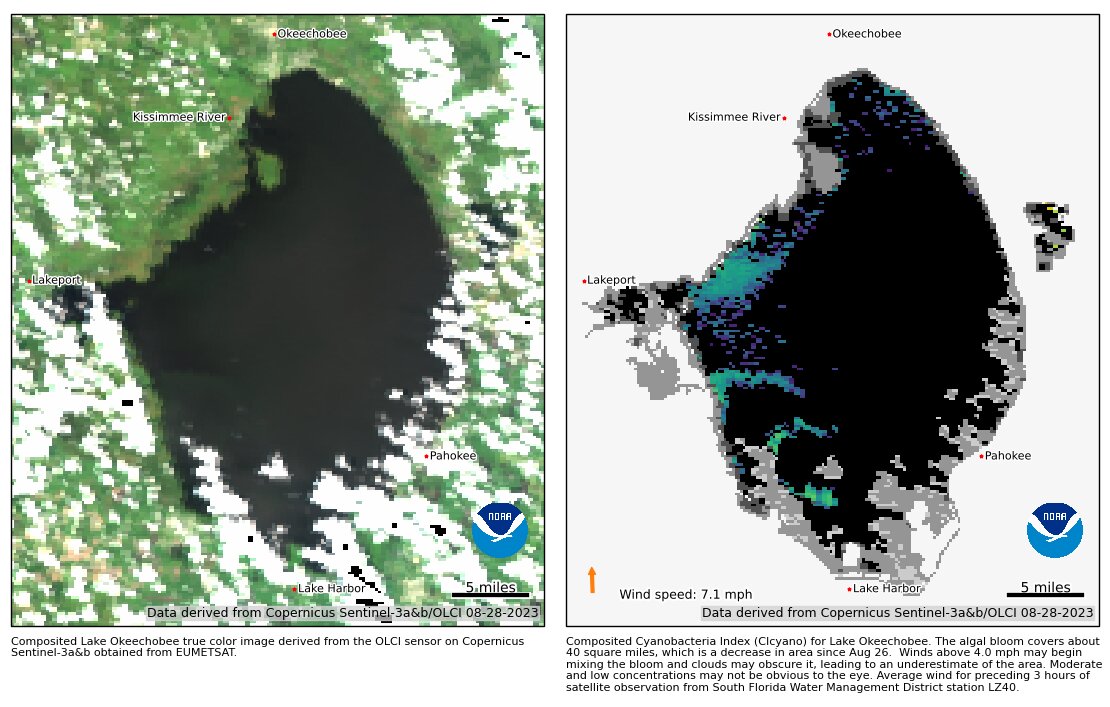NOAA satellite imagery indicates most of Lake Okeechobee has no or low potential for blue-green algal blooms ...
Join our family of readers for as little as $5 per month and support local, unbiased journalism.
Already have an account? Log in to continue. Otherwise, follow the link below to join.
Please log in to continue |

The National Oceanic and Atmospheric Administration satellite imagery indicates most of Lake Okeechobee has no or low potential for blue-green algal blooms and recent tests found lake water samples meet the EPA standard for drinking water.
According to the South Florida Water Management District weekly report released on Aug. 30, routine phytoplankton monitoring on August 21 - 23, detected microcystins at 9 out of 32 sites sampled, but none of the values exceeded the US Environmental Protection Agency (EPA) safety levels. The highest concentration of microcystins was recorded at the LZ30 site and was 0.7 parts per billion (ppb). The EPA considers levels below 1.0 ppb safe for drinking water and levels below 8.0 ppb safe for human recreational contact (swimming).
Phytoplankton communities at 24 sites were either dominated by Microcystis aeruginosa or Planktolyngbya limnetica or co-dominated by both. One site had communities co-dominated by Microcystis aeruginosa and Microcystis wesenbergii, and the remaining 7 sites had mixed communities.
Microcystis aeruginosa and Microcystis wesenbergii are capable of producing toxins, but do not always do so. Neither are capable of “fixing” nitrogen from the air. At the August SFWMD Governing Board meeting, SFWMD scientists theorized the algal bloom on the lake earlier in the wet season had consumed most of the available nitrogen in the water. Research has found that cyanobacterial toxin levels tend to be higher when higher levels of nitrogen are available in the water. In addition, when cyanobacteria produce toxins, they tend to use up the available nitrogen in the water at a faster rate.
Of the 27 species of cyanobacteria (commonly called blue-green algae) documented in the Lake Okeechobee Waterway by the U.S. Geological Survey, about 25% have the capacity to produce toxins.
Planktolyngbya limnetica does not produce toxins.